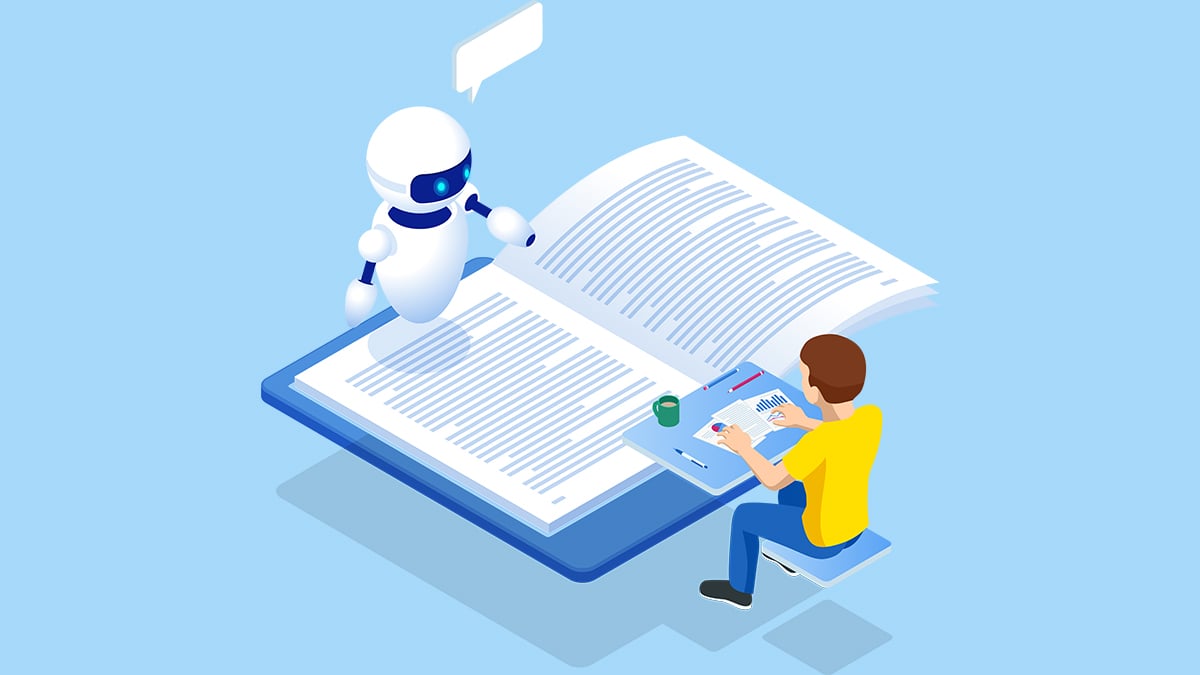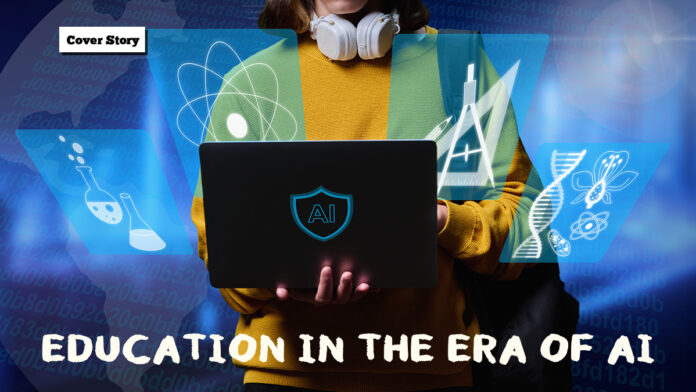Artificial Intelligence and Machine Learning have taken over the tech world. When Open AI’s Chat-GPT opened public access in late 2022, it transformed the tech world for better and worse.
AI has become a key feature for many new devices. Phones are leveraging AI power in photography and other features; special AI-powered laptops are being launched. Other AI-centric devices have started to hit the market this year.
Since entering mainstream consciousness, generative AI has been divisive. The biggest battlefield for AI adoption has been education. While both sides agree that AI can have a place, to what extent is a subject of debate.
How AI is changing education for the better
AI has significantly altered how we interact with our devices, from camera processing and screen adjustment to battery and power management. Generative AI tools like ChatGPT and Google’s Gemini are increasingly used in translation apps, code checks, and transcription, among other applications.
In particular, Generative AI and Large Language Models (LLM) have seen a surge in education use as students utilize them for research and assignments. Some generative AI can produce graphics or create designs explicitly catering to their use case. LLMs, meanwhile, provide users with information or other text-based needs. Both have niche use cases and work hand-in-hand to expedite tasks or work.
AI-based tools for lesson planning and material creation are also making teachers’ and educators’ work easier. AI tools are also being used to check exams, homework, and student papers. Other AI tools help teachers with administrative tasks such as organization and management.
Another practical AI innovation is AI assessment. Educators can utilize AI to help assess students’ output. AI can predict how students will fare in certain situations or examinations based on their performance. Using this data, teachers can fine-tune their lessons to take extra time on specific topics or give certain students additional time and guidance for a lesson they’re struggling with.
Finally, AI-based learning tools such as educational games or tutoring help students absorb the topic more easily. AI-based learning can fit every student as it learns what works and does not work the more it is used. It would provide students with the necessary tools to keep them engaged and ensure they can keep up with the lessons or topics. AI-based tutoring also helps them catch up with their lessons at their own pace.

The challenges of AI in education
AI has its pros and cons. One of the more obvious cons comes in the form of cheating and misinformation. Teachers and educators have expressed concerns about how AI, particularly generative AI, is being used to cheat.
Students have been caught using LLMs to cheat on homework, exams, and papers. Language model AI has made it easy to create long-form papers and essays with outstanding results. For educators, particularly in basic education, this is a red flag.
Assignments and work for young children are crafted to help their critical thinking and problem-solving skills. Relying on AI to do their work could affect the development of children’s critical thinking skills. Additionally, it could lead to over-dependence on technology and underdevelopment of other crucial skills.
Another major con of AI in education is its fallibility. AI is still a fallible technology; it’s still developing, and in the case of most LLMs, they’re constantly improving and gathering data. So, it’s no surprise that AIs can provide misinformation despite the large data set they are trained on.
AIs are limited to what they are trained on. If the information provided during their training is wrong, then the AI will repeat that wrong information when asked. As AI learns and develops, the data may be overwritten with newer information, but until then, it’s important to double-check the work.
Finally, educators have posited that complete reliance on AI to teach might lead to isolation. AI-based learning means that students would learn on their own. There would be no human interaction, causing students to be isolated from their peers. Fortunately, this con is still a remote possibility while the world tries to find a balance in fully adopting AI.
Finding balance
AI is here to stay, and like every new technology, we try to find a way to incorporate it and fully adapt it to form part of our systems. Utilizing AI in education is the same, as schools and universities try to find the necessary balance to fully incorporate AI in their teaching systems.
In the Philippines, universities have recently released guidelines for using AI at work. The country’s state university, the University of the Philippines, through its Open University system and its Los Banos campus, released guidelines for how teachers and students can use AI for teaching and learning.
The university has given teachers permission to set their own standards on how students may utilize AI for their classes. They’ve also permitted educators to determine to what extent they should use AI grading systems to assess their students’ work.
Meanwhile, for students, the university has required students to declare if they have used AI for their output. Of course, they are reminded to check for plagiarism when they utilize AI. Finally, the guidelines want students to avoid using AI for harmful and illegal purposes.
Another university, Far Eastern University, has also provided its students with guidelines on how to use generative AI for their school work, including recommended AI programs. The university warns that failure to adhere to the guidelines may lead to sanctions.
Beyond universities, the United Nations Education, Scientific, and Cultural Organization (UNESCO) has also created guidance on how nations can develop regulations and guidelines to ensure that Generative AI becomes a tool that benefits all rather than risk academic and technological disparity.
At the very heart of the UNESCO guidance is a human-centered approach. This means that AI and its subsequent regulations must follow the same human rights principles and protect human dignity. Generative AI still has many ethical concerns, such as copyright, deep fakes, and marginalization through biased data sets.
A human-centered approach entails that nations take cognizance of the pitfalls of current Generative AI and create regulations that would protect individuals’ rights against them. This includes adopting stricter data protection laws to prevent companies from illegally collecting and processing data for AI training. The recommendation also seeks to revisit copyright laws and incorporate protections against the unauthorized use of intellectual properties as training data. Finally, the guidance wants nations to build a capacity for the proper use of AI in education and research.
Utilizing AI in education and research is here to stay. While some cons still need work, there are also significant benefits, such as using AI to enhance the learning experience or to simplify tedious tasks. AI in education is still in its infancy, and as the technology develops, we should ensure that it is used to enhance and not to harm.
Words by Gabriel Pe
Also published in GADGETS MAGAZINE July 2024 Issue
